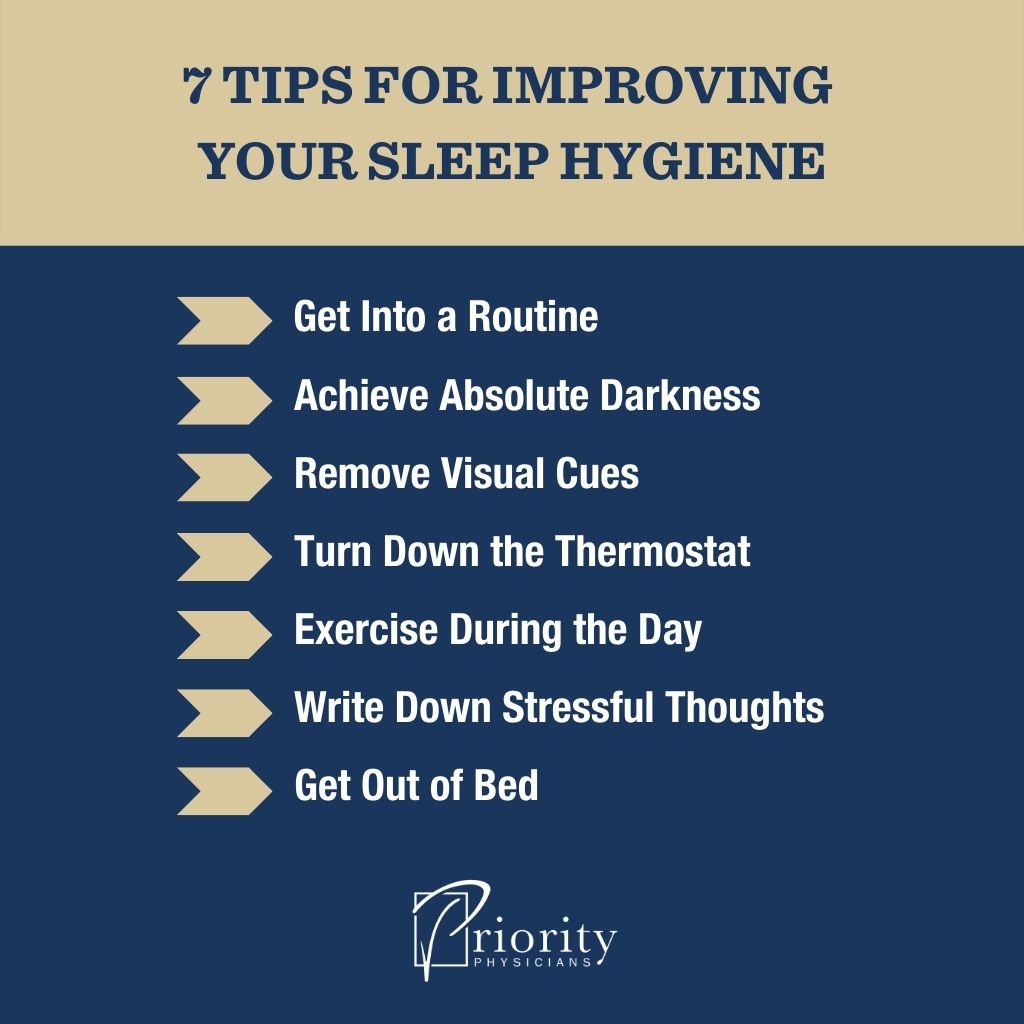It’s no secret that getting enough quality sleep is important for your health. While that may feel like a commodity for some, those hours of shut-eye are invaluable. During good quality rest, your body does everything from fighting off illness to naturally reducing your blood pressure.
We all know sleep is good for us. But my patients still ask me: how can I get more?
The obvious answer might be carving more time out of your schedule, but that may be out of your control. What you can control is how long it takes to fall asleep once you’re in bed, and that process starts well before you close your eyes.
You can maximize the quality and quantity of your sleep by controlling your environment and habits before you go to bed.
Wondering what color light helps you sleep the best? Read on.
What Color Light Helps You Sleep the Best?
Lights designed to promote better sleep come in a range of colors and intensities. From amber night lights to Himalayan salt lamps, it’s tough to determine which kind of product is most effective.
Wondering what color light helps you sleep? The thing is, there is no one color of light that will help you sleep. In fact, complete darkness is the ideal choice for getting good sleep.
However, for some people, complete darkness isn’t an option. If you live in a city, streetlights and lights from neighboring buildings may never turn off. If you have roommates, they may operate on a different schedule than yours and may be up and moving while you attempt to rest. And if you have kids, they may feel safer falling asleep with a nightlight.
In ranking the best lights for promoting sleep, any additional light source is going to be subpar to actual darkness. In a distant second, third, and fourth place, there are two tones of “sleep lights” that may impact your rest: cool (blue) and warm.
Blue Light
We know blue light interferes with your mind’s ability to “shut off.” More specifically, blue light signals daylight to your body and can interfere with your circadian rhythm, a process that regulates your body’s sleep based on light exposure. Blue light waves have become much more prominent with the popularity of LED-backlit devices, tricking our bodies into thinking it’s still daytime and suppressing melatonin production well into the evening.
Obviously, you don’t want blue light to interfere with your sleep, and there are several ways to reduce your exposure to it before bedtime. Electronic devices — smartphones, laptops, iPads, etc. — are some of the worst offenders of emitting blue light waves. Thankfully, blue light blocking glasses can make a big difference in filtering out some of these light waves as you use your devices throughout the day, especially if you work in front of a computer.
Some smartphones can even switch into a “night shift” display with warmer undertones to minimize the effects of late-night internet browsing.
Warm Light
Lights with yellow undertones, like amber lights and Himalayan salt lamps, may cause less disruption to your circadian rhythm, but they still have a negative impact on your body’s ability to shift into sleep. The real way to maximize your sleep is by removing all light sources from your room, including any electronics.
Reducing your light exposure at night might also bring long-term health benefits. Studies over the last decade have found a correlation between artificial light at night and risk of cancer, especially cancers that require hormones to grow (like breast and prostate cancers).
For a variety of reasons, when you hit the hay, try to get as close to complete darkness as possible.
My Recommendations
The best light for sleeping is no light. Some warm lights may create a calming environment before bedtime or help with meditation, but at the end of the day, this isn’t a solution to improving your sleep.
This problem is like cutting down a tree. Instead of doing it twig by twig, just go for the trunk and fix the problem. Switching between different light sources won’t significantly improve your quality of sleep — cutting out light entirely will.
My Top Seven Tips For Improving Your Sleep Hygiene

1. Get Into a Routine
Completing the same routine at the same time every night will train your brain to sleep.
2. Achieve Absolute Darkness
As I mentioned earlier, removing light from your environment — whether real or artificial — is key to helping your body produce melatonin and fall asleep.
3. Remove Visual Cues
While watching a movie in bed may sound like a natural transition to sleep, it may cost you precious minutes of shut-eye. Removing any screens, including televisions, from your room can minimize distractions. Ideally, don’t keep your phone or tablet beside your bed, even to charge. If you use your phone as an alarm, consider investing in a real alarm clock, or leaving your device across the room. Keeping your devices away will reduce the chances of scrolling through social media and turn your bed into a place your brain associates exclusively with sleep.
4. Turn Down the Thermostat
As you fall asleep, your body naturally cools down. You can mimic that pattern by creating a slightly cooler environment.
Now, I’m not talking about freezing. But even reducing your room temperature by a degree or two can help you cool off and cue your body to shift into sleep.
5. Exercise During the Day
Exercise encourages your brain to get into the right stages of sleep. This happens in part because exercise can quite literally exhaust you, but exercising also creates serotonin and helps your brain process stress, leading to better sleep quality overall.
6. Write Down Stressful Thoughts
If you’re prone to overthinking the second your head hits the pillow, leave a notepad beside your bed. The next time you catch yourself ruminating or thinking about tomorrow’s to-do list, write the idea down so you can deal with it in the morning and get it off your mind.
7. Get Out of Bed
This might sound counterintuitive, but if you’ve been in bed for 20–30 minutes and you’re nowhere close to dozing off, stop trying. Get out of bed and do something calming in a different room, like reading a book, for a few minutes. Lying in bed for hours without falling asleep isn’t good for you — it can confuse your brain if you spend time in bed without sleeping. Get up and do something that might make you tired. When you get back in bed, your brain will better associate that environment with falling asleep.
Do What Works For You
At the end of the day, we are creatures of habit and we’re all unique. Getting good quality sleep means building the right routine that works for you, no matter what color light helps you sleep. I have patients who swear by a sound machine, and I have patients who can’t imagine going to bed without a nightlight.
If there are tools that really help you sleep, I won’t discourage you from using them — as long as they’re helping you get restful sleep. If those tools trigger your brain to sleep, it’s not worth breaking that habit to try and sleep “the right way” and risk losing sleep in the process.

